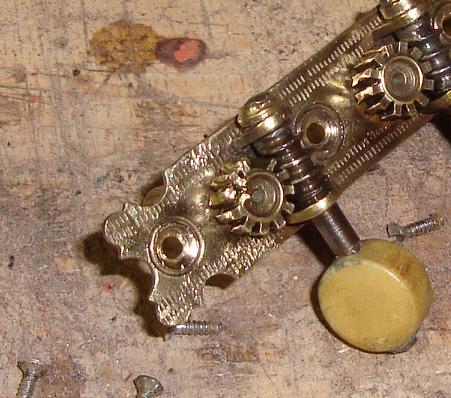| The tuner is an essential part of the instrument, and relatively high precision, in order that it works well under some tension, so it is not always possible to repair damage to them, but some basic repair work can be undertaken successfully. Very little equipment is needed, but an understanding of how they work and are put together is essential, so if you haven't already..... before starting, go and have a look at the tuner anatomy page!! If you need help, drop me a line on the Contacts Page. | |||||
| Anatomy | Enclosed | Cleaning | Buttons | Jammed | Types |
|
Typical damage |
|||||
| Here a mandolin arrived with mismatched tuners, probably because one side was ruined. Finding a matching pair is often very difficult. | This is the result of rust. The tuners were completely seized, and could only be removed by disassembling. Though this is only possible where the cogs are secured by a screw!! | Perhaps, most common.... here the buttons have broken and been lost. | |||
| Here a cog is missing, easy to fix in this set as they have screw-held cogs, if one is able to find a replacement piece of the correct size and teeth configuration. | In this aluminium set, the lug that hold the tuner spindles/worm gears have given way. There is no saving this one.. :( | In this old set, the tubular brass barrel, made by being folded over at the outer end, has split open under turning pressure. These it IS possible to repair. | |||






